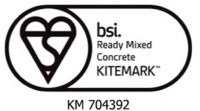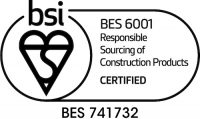Concrete floor staining is one of the best techniques to make an old floor look new and stylish. Whether it is for patios, a driveway or back garden paths, the staining techniques would help keep the driveway floor or any other concrete surface as good as new. Not only does it cost just half the price, but is a great solution for people who are allergic to carpet materials. Staining finds maximum use on domestic floors; it is especially used on those properties that have radiant heating.
In order to stain the cement mixture, it should be first unpainted and unstained. It is one of the most porous materials and, once stained, it has the capability of being strongly sealed. The process of staining the floor is not that complex, but it can be quite difficult to get the right or desired results. Most people prefer hiring professional contractors to achieve a better and more robust finish to the flooring. However, by following the easy, step-by-step guide, home-owners can also do the staining work themselves.
Colour Choice
The manufacturer’s colour chart can come in handy when selecting an ideal colour. There are various levels of cover with the various staining techniques. However, using semi-transparent stains that have a water-like appearance is one of the most widely used options. For those who are interested in having more coverage, an opaque stain would be a perfect choice. Before finalising on the colour, carrying out a trial on a small area would give a fair idea about the compatibility between the floor and the colour.
Preparation
The process requires removing all the objects off the floor surface. For patios and driveways, all the plants, flower pots and vehicles should be moved to some other place. Any kind of loose materials and residue should be disposed with a hose and a broom. Other kinds of elements stuck on the floor should be scraped off as well. Once the concrete floors are cleaned, it should be allowed to dry for a period of 24 hours.
Apply the Stain
After 24 hours, the concrete floors would be dry and will become perfectly ready for the staining process. The staining job would begin with placing the paint pan on a trap and pouring the stain onto the pan. With the help of a paintbrush, the stain should be applied around the boundaries, corners and the perimeter edges. The remaining area should only be stained once the edges are dealt with.
The stain is to be applied onto the rest of the flooring with the help of a pad; steams have to be used to define natural divisions of work. It is advised to deal with only one section at a time for maintaining a control over the blending, without drying it out too early. Once the pad is almost out of stain, it should be used to add a smooth touch to the edges, before more stain is added to the pad. The different parts of floors will absorb the stain differently and will take time accordingly to dry up and become ready for usage.
Concrete Flooring – Conclusion
The process of concrete staining is not too tough; however it can be a bit daunting for those who are still unsure about what exactly is required for carrying out a perfect staining job. Though DIY options feel a bit easy on the pocket, the insecurity and the uncertainty demand the presence of professional contractors for executing a better and a far more professional staining job. At the end of it all, it is not just about saving on money, personal satisfaction is equally important, too.



